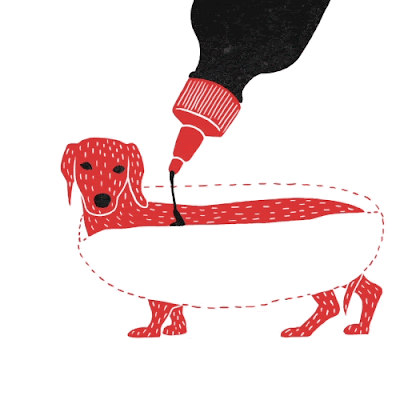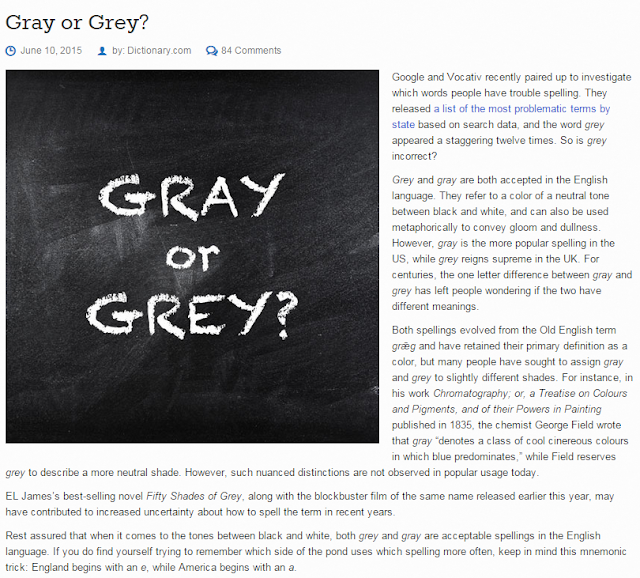龍年行大運,It's the Year of the Dragon. 過年相關的英文這裡都有啊。祝大家新春快樂。
The Year of Dragon
祝大家新年快樂!
這邊準備了一篇每年過年都不能免俗的農曆新年英文介紹
春聯
年夜飯
爆竹的英文要知道(同學,千萬別寫fire flower - 花火,是怎樣?日文上身了嗎?)
農曆年的介紹
Chinese New Year農曆新年, or 過年Guònián), also known as the Lunar New Year or the Spring Festival春節 is the most important of the traditional Chinese holidays.
The Chinese New Year period ends with the Lantern Festival元宵節, the fifteenth day of the month.
年獸的介紹
Some Chinese believe that Nian ("Nyehn") was a reptilian爬行動物(如蜥蜴/蛇或是烏龜) predator掠奪者that could infiltrate滲透/侵入 houses silently like the infamous惡名昭彰的 man-eating leopards花豹 of India. The Chinese soon learned that Nian was sensitive to loud noises, and they scared it away with explosions and fireworks.
Origin
吉祥年菜的介紹
To ensure good luck in the coming year確保來年好運, the Taiwanese always give every dish a special name. This dish is called the "Five Blessings for the New Year五福臨門" and represents longevity長壽, wealth財富, peace平安, wisdom智慧, and righteousness正義. Even though Lunar New Year celebrations generally last for only several days, starting on New Year's Eve, the festival itself is actually about three weeks long. It begins on the twenty-fourth day of the twelfth lunar month, the day, it is believed that various gods ascend to heaven諸神升天 to pay their respects and report on household affairs to the Jade Emperor跟玉皇大帝稟報每一個家庭的大小事務, the supreme Taoist deity(玉皇大帝為道教天公). According to tradition, households busily honor these gods by burning ritualistic paper money燒金紙 to provide for their traveling expenses.
農曆新年的各式慶典
10 Days Before the New Year's Day - Sweeping of the Grounds
春聯的介紹
Spring Couplets - Spring couplets are traditionally written with black ink on red paper. They are hung in storefronts in the month before the New Year’s Day and often stay up for two months. They express best wishes and fortune for the coming year表達來年好運與財富. There is a great variety in the writing of these poetic couplets to fit the situation.
The New Year's Eve - Reunion Dinner團圓飯
The New Year's Eve celebration was traditionally highlighted with a religious ceremony given in honor of Heaven and Earth, the gods of the household, and the family ancestors.
First Day of the New Year 大年初一
New Year's Day is also celebrated within the family. Usually, family members gather on the morning of New Year's Day. It is at this gathering that red packets紅包(另一說為Red envelopes) are given to unmarried members of the family. The age of the recipient收紅包的人 is not material to receiving the packets. Married couples usually give out two red packets on the first new year after being married. This is because the wife presents one and the husband presents one. In subsequent years they may give one as a couple.
Red packets traditionally consisted of amounts that were considered multiples. 紅包數字給雙數討吉祥Amounts like $2 (two pieces of $1), or $20 were acceptable. Similarly "multiples" such as $1.10 and $2.20 were also acceptable. However, this is not strictly adhered to 並無硬性規定. The gift was originally a token amount 紅包一開始裡面放的錢數字只是意思意思而已 but these days it is not uncommon to receive large sums in affluent families不過當今有錢人家給的紅包數字確實驚人. In some families, this tradition has evolved into the practice of substituting money-like instruments (stocks, bonds, unit trust更有家庭以股票 債券或是信託基金當成紅包來給) in place of large sums of cash.
Red packets are also given to unmarried visitors but the sums are often smaller than the packets given to family members or close friends.
Second Day of the New Year 大年初二
The second day of the new year is usually for visiting the family of the wife if a couple is married. A large feast is also typically held on the second day of the new year.
Seventh Day of the New Year大年初七
The seventh day traditionally is known as the common man's birthday, the day when everyone grows one year older.每個人都長了一歲
15th Day of the New Year - Lantern Festival 元宵節
The New Year celebrations ended on the 15th of the First Moon with the Lantern Festival. On the evening of that day, people carried lanterns into the streets to take part in a great parade. Young men would highlight the parade with a dragon dance舞龍(舞獅的英文就是lion dance). The dragon was made of bamboo, silk, and paper, and might stretch for more than a hundred feet in length. The bobbing上下快速跳動 and weaving of the dragon was an impressive sight and formed a fitting finish to the New Year festival.
Food 農曆新年食物介紹
Sweet Rice Cake年糕
Niangao (粘糕) The Chinese word 粘, meaning "sticky", is identical in sound to音同 年, meaning "year", and the word 糕, meaning "cake" is identical in sound to 高, meaning "high". As such, eating niangao has the symbolism of raising oneself higher in each coming year (年年高升 niánnián gāoshēng). Chinese families who practice Chinese traditional religion also offer Nian Gao to the kitchen god灶神, Zao Jun. Serving Nian Gao to the kitchen god is believed to help him provide a sweet report on the family because he will be satisfied and not inclined to deliver criticism
Prosperity Cake發糕
Fagao發糕 Literally translated as "Prosperity Cake", Fagao is made with wheat flour, water, sugar, and leavened發酵 with either yeast or baking powder. Fagao batter is steamed until it rises and splits open at the top蒸熟時上方會裂開. The sound "fa" means either "to raise/generate" or "be prosperous", hence its well intending secondary meaning.
Jiaozi Dumplings元寶 餃子
Jiaozi Dumplings, are small or large mounds一堆 of dough (此為麵疙瘩)that are usually dropped into a liquid mixture (such as soup or stew) and cooked until done, some are stuffed with meat and/or vegetables包餡的是水餃.
Mandarin oranges橘子
Mandarin oranges (a symbol of wealth and good fortune). Red Jujubes紅棗 symbolizes the gaining of prosperity
Whole Fish全魚
Whole steamed fish (a symbol of long life and good fortune). This can be seen in wall decorations of fish themes. The word 魚 (yú), meaning "fish", shares the same pronunciation with the word 餘, meaning "surplus" (e.g. having money left over from covering expenses). The common greeting for the new year "niannian you yu" can mean to enjoy a surplus, i.e. financial security, year after year.
麵條(不能斷掉)Uncut noodles (a symbol of longevity)











留言
張貼留言